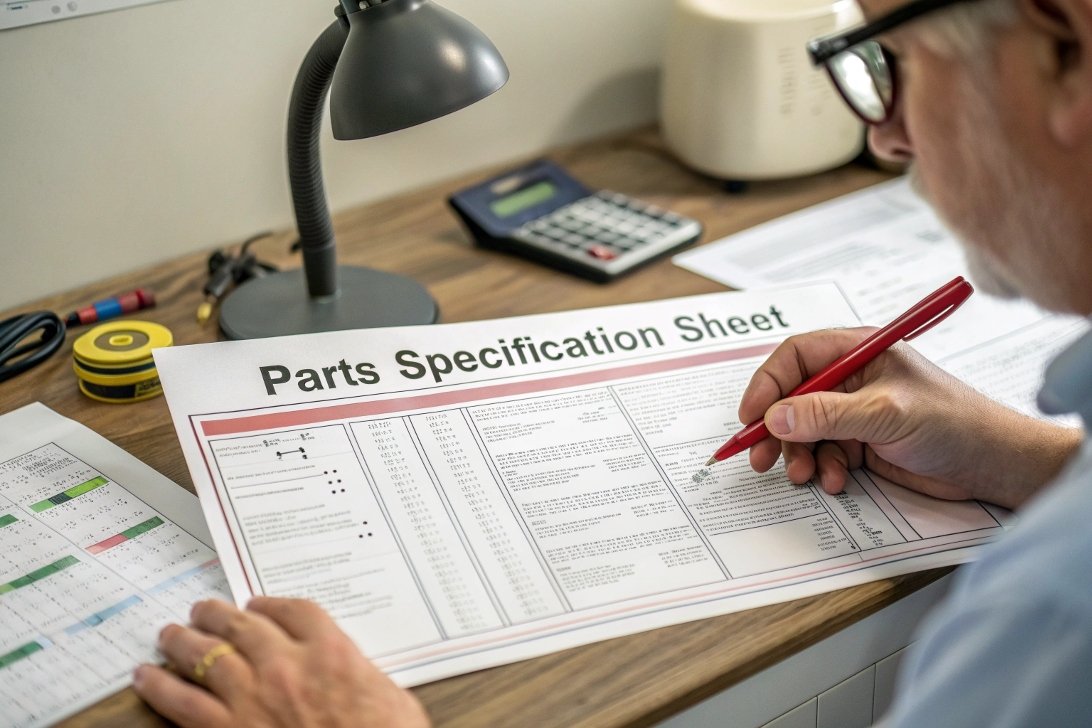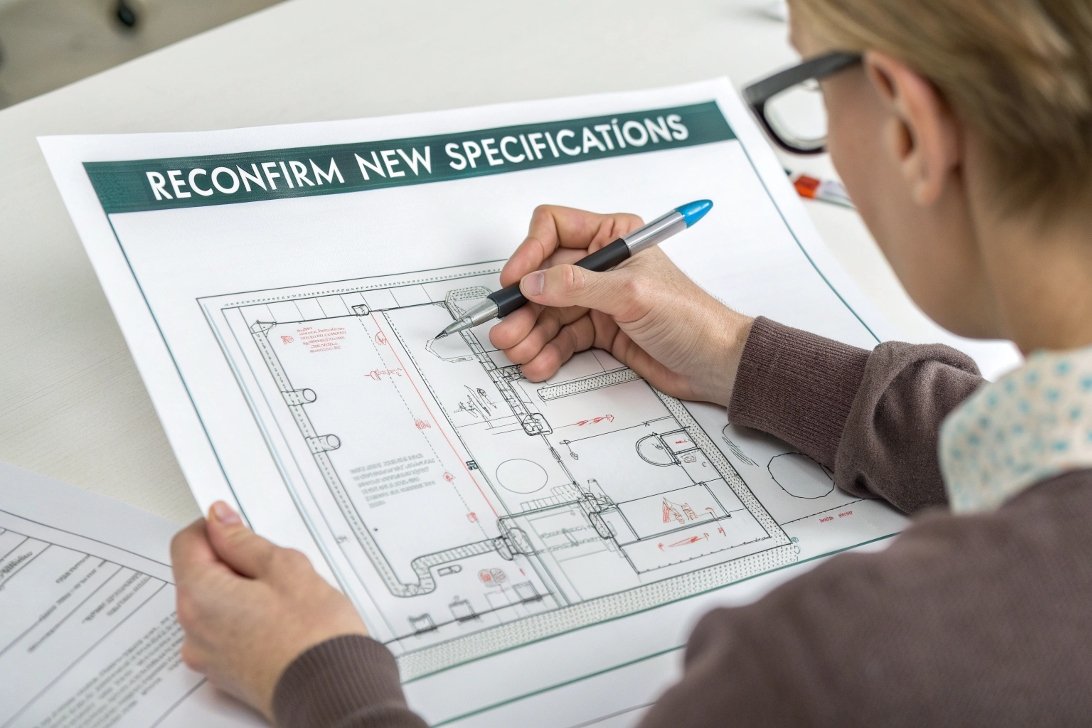
Dealing with unexpected changes in custom parts specifications1 can be a headache. As a business owner sourcing custom parts, I’ve faced this challenge more times than I can count. These last-minute adjustments can affect production schedules, costs, and, ultimately, the quality of the final product. But over time, I’ve learned a few strategies to manage such changes effectively and ensure the process runs smoothly.
When dealing with unexpected changes in custom parts specifications, having a clear process in place can help minimize disruption. Good communication, flexibility, and a structured change management process2 are key to handling these changes efficiently.
I’ve found that by planning ahead and staying proactive, I can manage last-minute changes without compromising on the quality of the custom parts. In this article, we’ll dive into the key steps I’ve taken to handle these situations and how you can implement similar strategies.
What Are the Key Steps to Handle Last-Minute Changes in Custom Parts Orders?

Unexpected changes in specifications can throw a wrench in your plans, but taking the right steps can help you minimize the impact on your custom parts order. From quickly assessing the situation to adjusting timelines, there are strategies that can keep things on track.
Steps to Handle Last-Minute Changes
| Step | How It Helps |
|---|---|
| Evaluate the Impact of Changes | Quickly assess how the changes affect production timelines3, costs, and quality. |
| Reconfirm Specifications | Ensure the new specifications are clearly understood and agreed upon by both parties. |
| Adjust Production Timelines | Work with your supplier to determine if production schedules need to be adjusted. |
| Communicate Changes Clearly | Provide clear, detailed documentation outlining the changes to avoid any miscommunication. |
| Negotiate Cost Adjustments | If necessary, discuss how the changes will impact pricing and agree on a fair adjustment. |
| Confirm with Engineering Teams | Have your engineering team review the changes to ensure they can be implemented without compromising the part’s function. |
My Experience with Last-Minute Changes
I’ve had my fair share of sudden changes in part specifications. The first few times, I panicked, worrying about missed deadlines or increased costs. But I quickly realized that handling these changes required a calm and structured approach. Now, when changes come up, I focus on assessing the impact first and then work with my supplier to find solutions. This has allowed me to stay on top of the situation and keep the project on track.
How Can You Communicate Changes Effectively with Your Supplier?

Effective communication is key when dealing with last-minute changes. The better you can explain the changes to your supplier, the more smoothly the adjustments will be made.
Tips for Communicating Changes
| Tip | How It Helps |
|---|---|
| Be Clear and Detailed | Provide clear documentation of the changes, including updated drawings or specifications. |
| Use a Centralized Communication Channel | Utilize email or project management tools to keep all stakeholders informed in real-time. |
| Provide Visuals | Use visuals (e.g., diagrams, pictures) to highlight the areas that need changes. |
| Set Up Regular Check-ins | Hold regular meetings or calls to track progress and ensure alignment on changes. |
| Confirm Understanding | After discussing the changes, confirm that both you and your supplier are on the same page. |
| Use Change Order Forms | Implement a formal change order form to document the change and its impact on timelines and costs. |
My Approach to Effective Communication
One thing I’ve learned is that clear and timely communication is essential when unexpected changes arise. When I need to communicate changes to my supplier, I don’t just send a quick email with vague instructions. I send a detailed document outlining the new specifications, and I make sure to set up a call to go over everything. By ensuring that everyone is on the same page, I’ve found that last-minute changes are less likely to cause confusion or mistakes.
Why Should You Implement a Change Management Process for Custom Parts Specifications?

A formalized change management process can help ensure that any changes to custom parts specifications are handled efficiently, minimizing disruptions to the production timeline and cost structure.
Benefits of a Change Management Process
| Benefit | How It Helps |
|---|---|
| Ensures Consistency | A structured process ensures that all changes are handled in a consistent manner, reducing errors. |
| Reduces Disruption | By having a clear process, you minimize the impact of changes on production schedules and quality. |
| Improves Communication | A formalized process provides clarity and reduces misunderstandings during the change process. |
| Streamlines Decision-Making | With a process in place, decisions about changes can be made more quickly, preventing delays. |
| Prevents Scope Creep | Having a formal change request process helps prevent constant or unplanned changes that could affect the project’s success. |
My Experience with Change Management
When I first started working with suppliers, I didn’t have a structured process for handling changes. It often led to confusion and even missed deadlines. But when I implemented a formal change management process, things started running much more smoothly. Every time a change was needed, we would go through the same procedure: review the change request, assess the impact, adjust timelines, and communicate clearly with everyone involved. This process helped us stay on track and ensured that changes didn’t derail the project.
Conclusion
Dealing with unexpected changes in custom parts specifications requires a clear and systematic approach. By evaluating the impact, communicating changes effectively, and implementing a structured change management process, you can minimize disruptions to your production timeline and ensure that the final product meets your expectations. With a proactive mindset and a reliable process in place, managing these changes becomes much more manageable, allowing you to keep your projects on track and your suppliers aligned with your needs.
-
Understanding best practices can help you navigate changes effectively and maintain quality in your custom parts. ↩
-
An effective change management process is crucial for minimizing disruptions and ensuring smooth operations in custom parts sourcing. ↩
-
Learning strategies to adjust production timelines can help you stay on track even when unexpected changes occur. ↩

